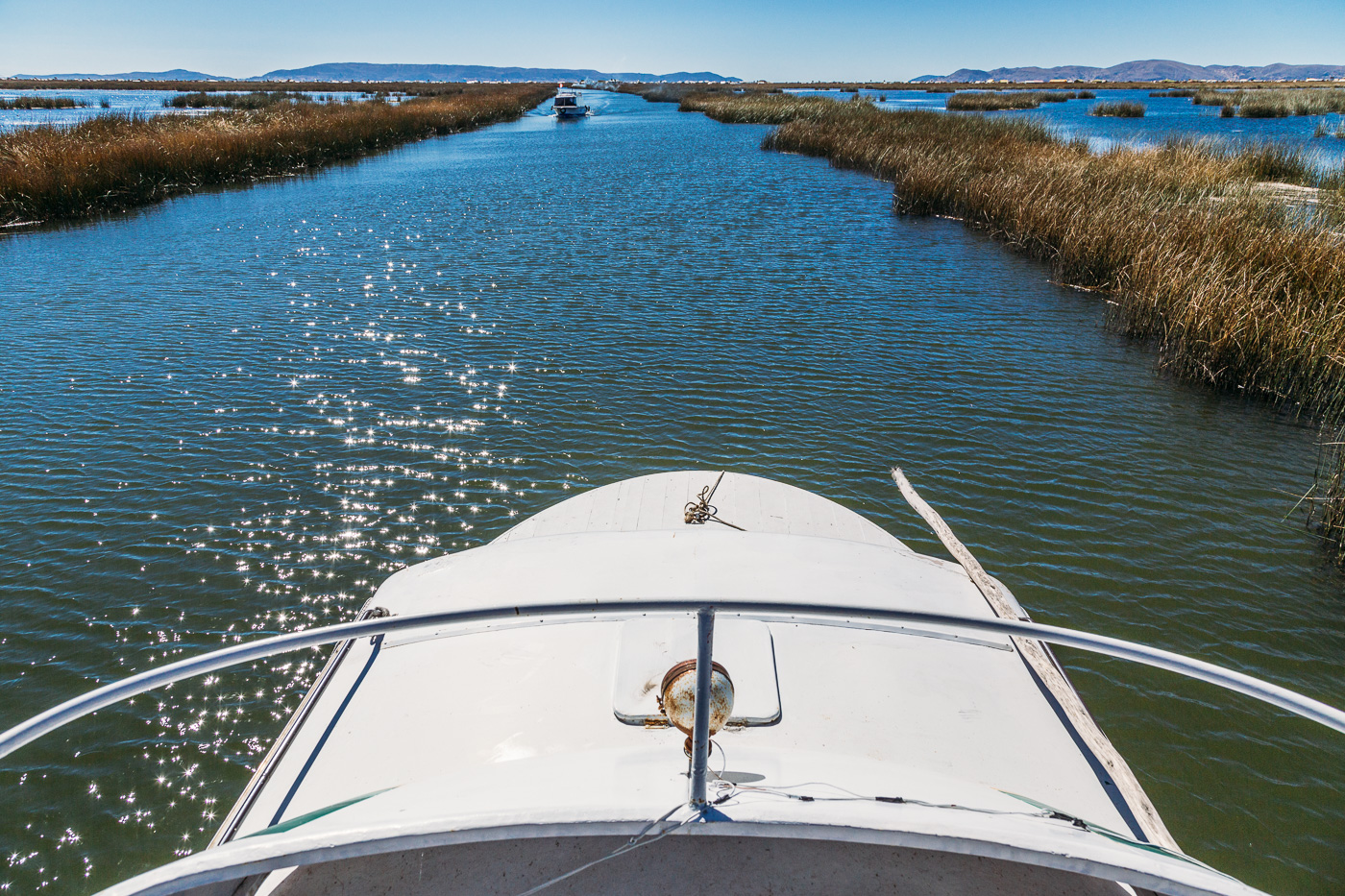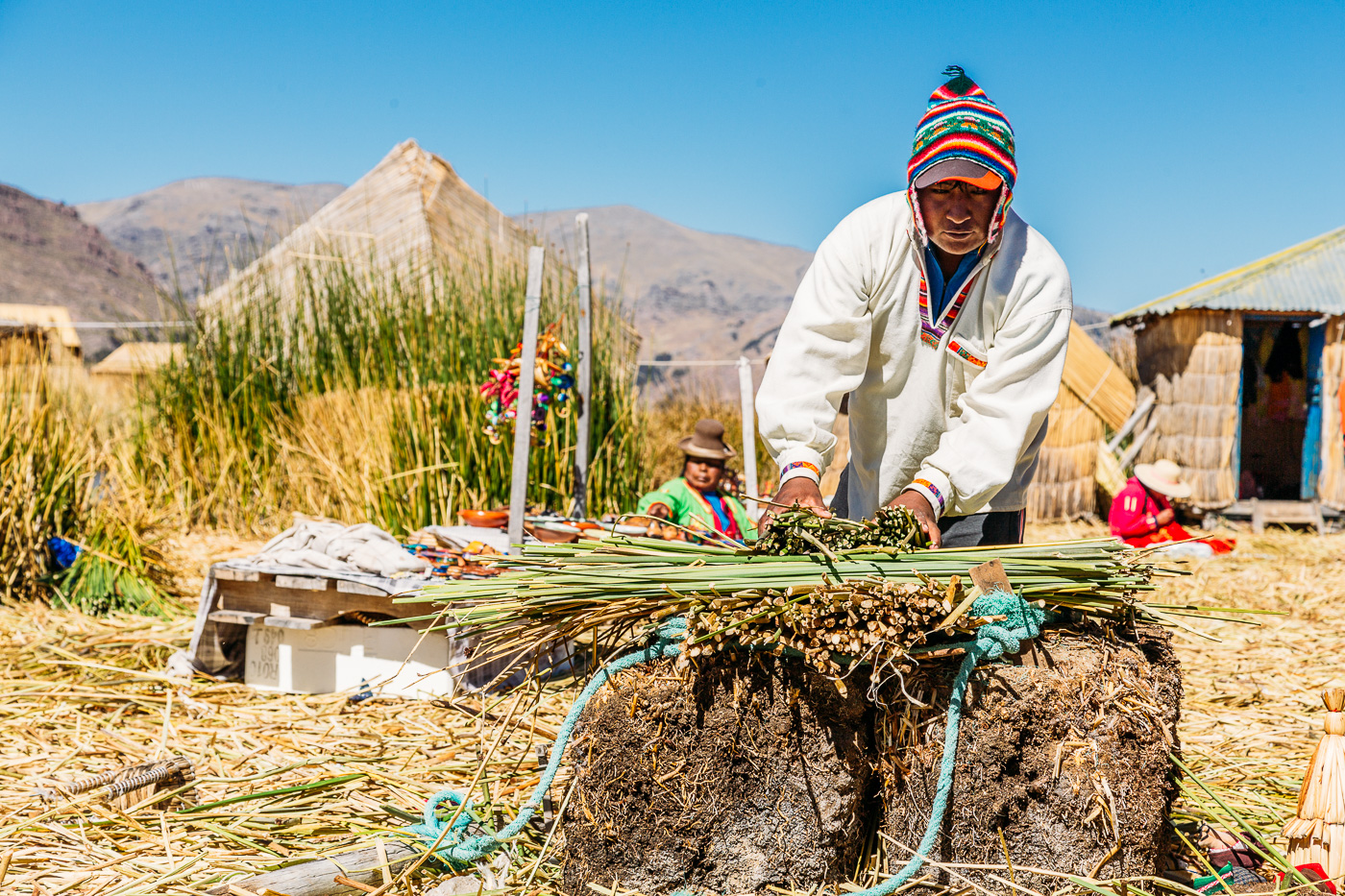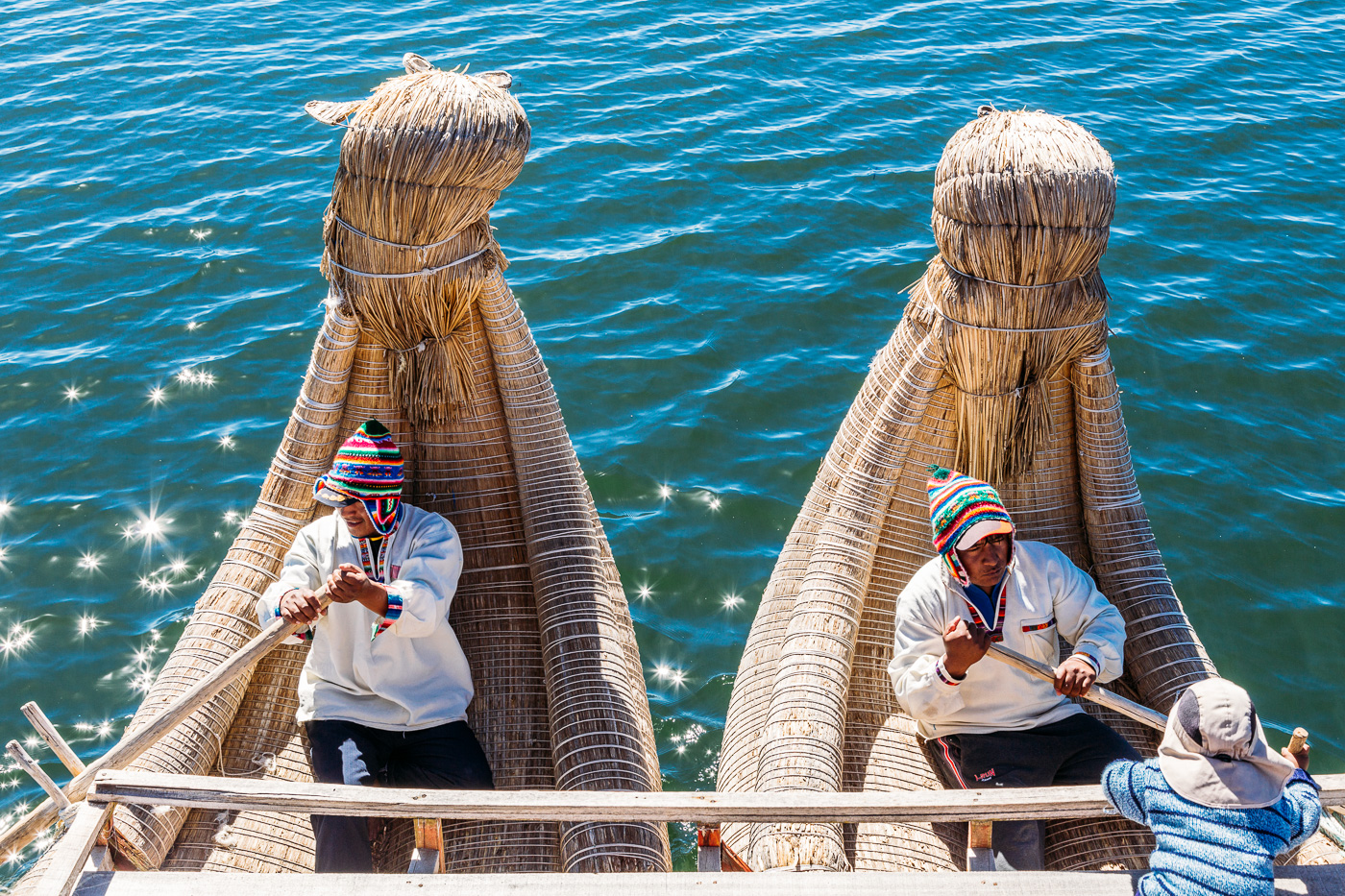There is something not being talked about here.
The guidebooks paint an exotic picture of the floating islands of the Uros, a pre-Incan people who live on self-constructed floating reed islands off the coast of Lake Titicaca near Puno, as a cultural novelty that must be seen to believe.
And indeed, the construction of the islands, boats and furniture using a layered reed system is a true marvel which is difficult to comprehend unless you see it.
However, since the Uros opened up their homes to curious tourists some 30 years ago, something has gone awry. Our day trip to Summa Willjta floating reed island on Peru’s side of Lake Titicaca was awkward, uncomfortable and felt exploitative for both us as well as the Uros people.
We are still left scratching our heads as to how this experience could be improved for tourists as well as the people of Uros. 
Uros People of The Floating Reed Islands
What draws people to the edge of Peru’s southern border (aside from the gorgeous Lake Titicaca) is the cultural tourism of the indigenous communities inhabiting islands and small villages along the border of the lake.
The Floating Reed Islands (Isla Flotantes) of the Uru people are one of these communities due to their unique choice of lifestyle living on islands they’ve made entirely out of reeds. Originally built for defensive purposes, the floating reed islands allowed the Uros to be able to move their homes further into Lake Titicaca if needed. Today only about 200 of the remaining 2,000 Uros descendants still live on a network of nearly 70 floating reed islands five kilometers from the coastal mainland town of Puno, Peru.
 What Are The Uros Islands Made Of
What Are The Uros Islands Made Of
The construction of islands and boats out of totora reeds which grows abundantly on Lake Titicaca is truly remarkable.
The Uros people start by cutting out a block of the dense reed root system measuring two meters in depth. This root layer is woven together and anchored with ropes and sticks to the bottom of the lake to hold the islands in place. From here layers of reed are placed in contrasting directions on top of the root system until the total density of the island measures 4 meters or so. Building an island is an intensive process; in total it can take up to a year to construct a new island and they typically can accommodate between 7 and 10 families. While a reed island can last up to 25 years, because of rotting of the reeds at the bottom of the island, new layers have to be added constantly.
 Lake Titicaca and Floating Reed Island Tour
Lake Titicaca and Floating Reed Island Tour
We came to Puno, Peru with the intention of visiting Taquile, another Lake Titicaca island. However, due to strong winds that capsized a boat the previous day they weren’t allowing boat traffic to navigate that far into the lake. So instead our tour company, All Ways Travel, who we thought were pretty mediocre despite their raving reviews, sold us a half-day Uros floating island tour. When in Puno, I guess…
From the port our boat navigated us slowly through a forest of shallow reeds until we arrived at Summa Willjta, one of the floating islands of the Uros indigenous population. We were greeted by the president of this island (population 22) who then proceeded to demonstrate using a miniature model how his community constructs islands, boats and furniture out of the totora reeds. The tour was good, though very staged, up until this point.
Next the tour group was divided up and each group was asked to visit one of the family’s houses. We were paired with the president of the island who we followed to his home and did our best to understand his Spanish as he pointed out his bed, furniture, and the clothes of his family members. Then came the first round of trinket sales where we were asked to buy handicrafts that he and his wife supposedly made. When we didn’t show interest we were led outside of his home to where all of the women from the island were lined up with even more trinkets. One by one the President’s wife held up different textiles and described how much time it took her to make each of them. Unfortunately, we had seen these very same handicrafts in the local markets only a few days prior and they most certainly were not handmade or unique to the Uru people.
When we said no thank you to buying handicrafts our guide from Puno reminded us that the only way the Uros make money is via tourism and each family has to sell at least 8 large textiles (100 bolivianos each) per month to make ends meet. I wanted to ask him why these families weren’t being compensated adequately from the actual boat tour revenues. Uncomfortable by the high pressure sales we tried our best to escape to the islands edge until all of the other groups were finished.
Next was an “optional” (but really not optional) additional 10 boliviano per person ride on one of Summa Willjta constructed reed boats to take us across the island complex. After our entire tour group loaded up onto the boat, the women of the island initiated a song and dance (twice in different languages) to bid us farewell. They looked about as uncomfortable as I felt at that moment.
Our boat ride lasted all of five minutes and landed us at another reed island built entirely for tourism to yet again try to sell us more trinkets and overpriced coffees and baked goods. Two coffees and another fifteen long minutes later, we were gladly boarding our original boat to return us to Puno.

Cultural Tourism & Best Intentions
Not unlike our experience visiting the Siona people in the Ecuadorian Amazon, our trip to the Uros Floating Islands felt contrite, forced and very staged. Rather than having an authentic experience (an unrealistic expectation on our parts from the start) we left feeling guilty and uncomfortable and without much of an understanding for why the Uros have chosen to continue living in the unique and rather remarkable way they do. It didn’t seem like these feelings of discomfort were that far off for the Uros that we met on Summa Willjta either.
Today cultural tourism provides one of the only means of income for the Uru people. Yet these cultural tours have clearly put a strain on their traditional ways of life and forced them into the position of constant sales to survive. The end result is an experience that leaves everyone wanting for more (except perhaps the profiting tour operators from Puno).
While the construction of the floating reed islands was truly fascinating, our day at Summa Willjta will make me think twice (and do my research) before signing up for another cultural tour. 
Have you visited the floating reed islands? Did you have a different experience or other reactions? We’d love to hear what you thought!























